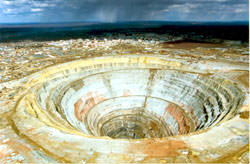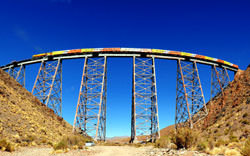Bye, will be back next year. Largest Nature Reserves on Earth
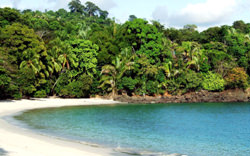
Reserves naturelles l'Air et Tenere, Niger
Air and Tenere is one of the largest protected areas in Africa of around 77360 square kilometres. It is located in northern part of Niger and boasts a variety of landscapes. In the reserve, which is annually visited by more than 4000 tourists, you can admire 40 species of mammals, more than 150 species of birds and about 20 species of reptiles, as well as rare species of amphibians.
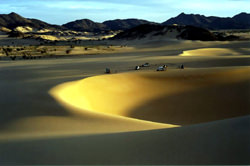 Although a significant part of the reserve is covered by a desert, this doesn’t in any way undervalue Air and Tenere’s natural splendour. The desert is full of dunes, whose height often exceeds 300 meters. Marble hills Kogo, blue mountains and Takaloukouzet peak are also worth mentioning. Arakao Crater is the most mysterious spot in the desert, it is believed to have been formed millions of years ago as a result of the fall of a huge meteorite.
Although a significant part of the reserve is covered by a desert, this doesn’t in any way undervalue Air and Tenere’s natural splendour. The desert is full of dunes, whose height often exceeds 300 meters. Marble hills Kogo, blue mountains and Takaloukouzet peak are also worth mentioning. Arakao Crater is the most mysterious spot in the desert, it is believed to have been formed millions of years ago as a result of the fall of a huge meteorite.
Papahanaumokuakea, USA
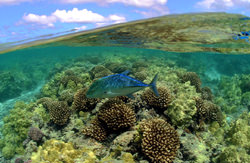
Papahanaumokuakea, USA
Description
Papahanaumokuakea reserve encompasses a group of atolls and miniature islands of the Hawaiian archipelago. Created in 2006 with 360000 square kilometres, it is the world’s largest protected marine area. Both exotic plants and animals which can be seen on the islands and a unique system of coral reefs, hidden under the water, are of tremendous value. Description
Kavango-Zambezi Conservation Area, Angola - Botswana - Zambia - Zimbabwe - Namibia
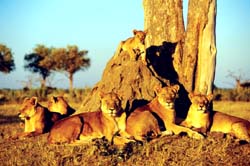
Kavango-Zambezi Conservation Area, Angola - Botswana - Zambia - Zimbabwe - Namibia
Description
The Kavango-Zambezi reserve is unique in every way. Spanning approximately 444000 square kilometres, it has common borders with Angola, Botswana, Zambia Zimbabwe and Namibia. There are no boundaries in the reserve, which allows its inhabitants to move freely within a wide area. The largest nature reserve in Africa includes some national parks, particularly Chobe and Okavango Delta regions. Description
Northeast Greenland National Park, Denmark
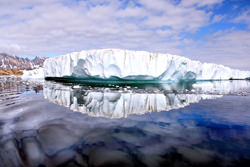
Northeast Greenland National Park, Denmark
Description
Covering an area of 972000 square kilometres, Northeast Greenland’s National park is the world’s largest and exceeds the area of 163 countries on Earth. The unique territories were declared protected as early as 1974, up to 1988 the park expended including new areas. Description
Great Limpopo Transfrontier Park, South Africa
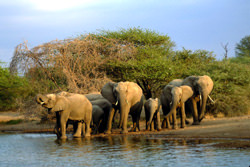
Great Limpopo Transfrontier Park, South Africa
Description
Desolate Africa is surprisingly rich in reserves. The Limpopo Transfrontier park is located on this arid continent. It was established in 2002 and linked the Limpopo Park in Mozambique, Gonarezhou National Park in Zimbabwe and Kruger National Park in South Africa. The reserve borders have been abolished, it is enough to have an entry visa from one of the host countries to visit the reserve. Description
Wrangell St. Elias National Park, USA
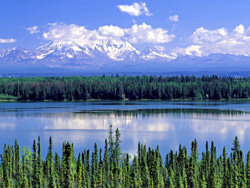
Wrangell St. Elias National Park, USA
Description
Harsh Alaska is home to a fascinating reserve. Wrangell-St. Ellias National Park is located here. Established in 1980, it covers an area of more than 53320 square kilometres. The most remarkable attraction in the reserve is St. Elias Mount. Fabulously beautiful park with an abundance of snow covered mountain ranges and vast plains attract a huge number of travellers. Over 60000 tourists visit the park annually since 2007. Description
Jianfengling, China
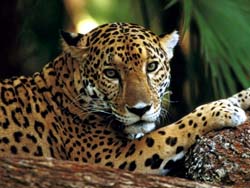
Jianfengling, China
Description
Ecological reserve Jianfeng Ling, located in Hainan island, can be easily called one of the richest and the most picturesque reserves on the planet. Its territory presents unique species of plants that could be seen on the planet for thousands of years ago, some trees are as old as hundreds of years. Mighty oaks, aged more than 700 years, according to conservative estimates, are of particular interest to tourists. Description
Sinharaja Rain Forest, Sri Lanka
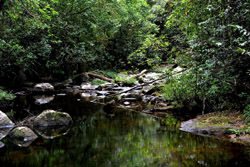
Sinharaja Rain Forest, Sri Lanka
Description
Lovers of hiking in rainforests will definitely appreciate Sinharaja Forest Reserve, located in Sri Lanka. Established in 1978, the reserve is now famous for its variety of exotic plant species, many of which one cannot see anywhere else. The same can be said about the animals. In the jungle, one can meet the rare Ceylon starling, azure magpie, beautiful pythons and leopards as well as Indian elephants. Description
Fiordland National Park, New Zealand
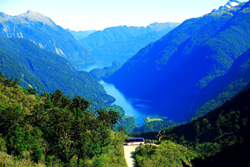
Fiordland National Park, New Zealand
Description
Amazing and unique Fiordland National Park is the largest reserve in New Zealand. It has an area of 12500 square kilometres and it is here that the deepest lakes of the country, the thickest jungles and the highest mountains are located. Established in 1952, the reserve is subjected to scientific research. The inaccessibility of some of the remote areas makes the researches considerably more difficult. Description
Manuel Antonio National Park, Costa Rica
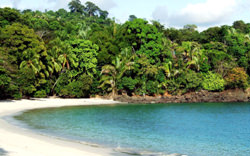
Manuel Antonio National Park, Costa Rica
Description
Surprising is the fact that the most dense areas of our planet, from biological point of view, are rather small. The brightest example of such an ‘anomaly’ is Manuel Antonio National Park whose territory is just 7 square kilometres. The reserve was established in 1972 and has long been extremely popular among the tourists. For them a special infrastructure has been created here. Description
Yellowstone National Park, USA
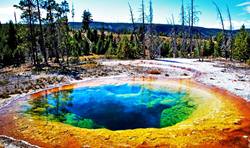
Yellowstone National Park, USA
Description
Yellowstone National Park is an attraction of world’s importance. It was established in 1872 and is the world’s oldest reserve. Yellowstone park spans an area of 8983 square kilometres and extends to the US states of Wyoming, Idaho and Montana. This territory is known for the diversity of flora and fauna and is the location of large geysers and unique geological features. Description
Snowdonia National Park, United Kingdom
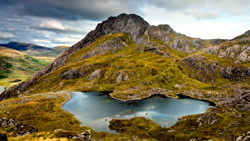
Snowdonia National Park, United Kingdom
Description
Snowdonia reserve is located in the northern part of Wales and covers a territory of 2170 square kilometres. It was established in 1951 and was named for the mount Snowdon – the highest peak of Wales. Snowdonia reserve is a living working area, more than 26000 people live permanently on the territory of the National park. Over 6 million travellers come to the picturesque Snowdonia annually. Description
Serengeti National Park, Tanzania
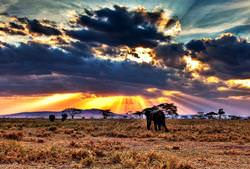
Serengeti National Park, Tanzania
Description
One of the world’s largest reserves - the Serengeti reserve - is located in Tanzania and covers an area of 14763 square kilometres. About a century ago the Maasai tribes were the first to settle the deserted territories that were once home to wild animals. With the arrival of Europeans, the Serengeti has become an attractive place for hunters, only in 1951 these territories were identified as a reserve. Description
Tatra National Park, Poland-Slovakia
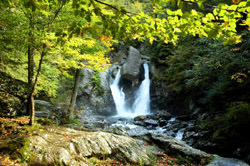
Tatra National Park, Poland-Slovakia
Description
The picturesque Tatras are well-known to those travellers who have ever reached Poland or Slovakia. Here, on the territory of two States Tatra National Park stretches around the mountain range. The park was created in 1949 with an area of 738 square kilometres. Citizens in those countries became aware of the value of the exclusive territories in the 19th century, but their efforts to create a reserve ended in failure back then. Description
Parque Nacional de Donana, Spain
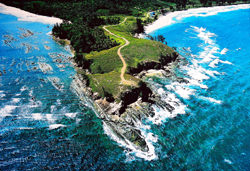
Parque Nacional de Donana, Spain
Description
In Spain there are worthy natural reserves too. Gorgeous Coto de Donana is among them. It is located in the southern part of the country and is known to ornithologists as a Paradise for Birds. It is the diversity of the feathered inhabitants that has made the reserve world famous. The reserve is located on the paths of bird migration, 360 species of which one can see here within a year. Description
Popular cities

Amsterdam
347 hotels
347 hotels

Bombay
74 hotels
74 hotels

Copenhagen
94 hotels
94 hotels

Girona Airport
131 hotels
131 hotels

Karlsruhe
39 hotels
39 hotels

Lyon
98 hotels
98 hotels

Nerja
57 hotels
57 hotels

Manhattan
563 hotels
563 hotels

Santiago
150 hotels
150 hotels

Tokyo
211 hotels
211 hotels
Largest Nature Reserves on Earth - interactive map
OrangeSmile.com - online travel reservation expert providing reliable car rental and hotel booking services. We feature more than 25.000 destinations with 12.000 rental offices and 200.000 hotels worldwide.
Secure Server




OrangeSmile B.V. - Hotel Booking Worldwide
Head office: Weegschaalstraat 3
Eindhoven,
5632 CW
Netherlands
+31 40 40 150 44
Copyright © 2002 -
OrangeSmile Tours B.V. | OrangeSmile.com | Under the direction and management of IVRA Holding B.V. - Registered at Kamer van Koophandel (KvK), The Netherlands No. 17237018










